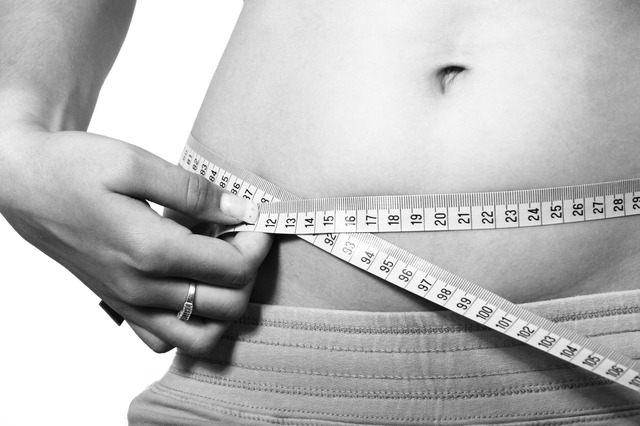Smartphones are created to be used by males. Normal office temperatures are fixed to the metabolic resting rate of males. Also, regulation car safety tests are done on male crash test figures.
We live in a world created for and around men. So, how did this bias come about?
It’s partially due to the gender data gap. When we think that males and the needs or males are standard, we fail to think about women and their needs. This ability to ignore women and their need cause gender data gap where women aren’t sufficiently represented in the data that determine decision-making.
The gender data gap is the cause of a lot of problems that women encounter every day of their lives, for instance staying longer in lines for public bathrooms that aren’t made to provide for their needs. At its greatest extreme, the gender data gap can have harmful outcomes such as worse consequences for women in a car crash that can be linked to this gap.
It’s not only women who suffer, either. The gender data gap has a negative effect on all of us from politics to the global economy. In order to address this, we need to first face up to how it forms our world.

1 – We are conditioned to see the male gender as the default and disregard or ignore the female experience.
In 1889, when archaeologists discovered an armored Viking skeleton in Sweden, they thought that the bones were for a male warrior – in spite of the skeleton’s having female pelvic bone. Worse, no one detected the mistake for over 100 years! And the archaeologists’ guess there wasn’t a one-off. Women are ignored always because we’re conditioned to see the male as the default gender.
Our ability to focus on maleness goes back as far as the ancient Greek philosopher Aristotle. He describes men as standard and women as deviations during the Generation of Animals (340 BC). Also, in anatomy, the male body was historically the default. When the female was even considered at all, it was the exception. Part of the female organs such as the ovaries wasn’t even given a name until the seventeenth century.
However, gender bias isn’t only a thing of the past. Even something as modern as emojis which is the world’s newest language still honors masculinity. All emojis are allocated by a single company known as the Unicode. However, it’s up to each emoji-supporting platform to decide how they portray Unicode’s emojis.
Unicode didn’t allocate genders to emoji signs before 2016; they only specified that emoji symbols should have, for instance, a runner or a police officer. The platforms decide to represent male runners and male police officers. It was just when Unicode started to allocate gendered emoji symbols that women and men attained “emoji parity.”

In a lot of other aspects of contemporary life, though, representational parity is a long way off. Representation skews male from statues to banknotes to textbooks. There are more statues of men called John than there are statues of all non-royal women put together in the UK! Also, in the UK banknotes, presently, there’s just one woman represented which is Jane Austen.
This skewed representation is also strengthened in education. In a study that was conducted in 2014, it was revealed that in grammar and language textbooks, the references to men is more than the references to women 3:1.
As a matter of fact, as we’ll see in the next chapter this bias affects every part of our lives, from the design of our cars and smartphones to local neighborhood authorities’ measures for snow shoveling!
2 – Data focuses on male experience and ignore the experience of a female.
In Sweden, Karlskoga, during the snowy mornings, snow is removed from sidewalks, pedestrian areas, and roads. In that arrangement. However, it was formerly the other way ‘round. Why? This is because the first thing in the morning, full-time commuters have a tendency to drive, while part-time workers or carers tend to travel on foot. The Karlskoga council considered the full-time commuters as their main concern.
However, what they weren’t aware of is that this also signified they were favoring men more than women. This is because most full-time workers are men, while carers and part-time workers are overwhelmingly women. The council understood they hadn’t thought to look at women in their data set. When they eventually did, they realized the mistakes in the snow-clearing schedule, and the new procedure led to far fewer snow-related pedestrian injuries.
Why are women’s needs often ignored at a policy level? Maybe because a lot of policies, whether it is governmental or corporate, are fixed by men. For instance, look at Facebook: COO Sheryl Sandberg wasn’t the first Facebook worker to get pregnant, however, she was the first pregnant executive. She soon understood the company needed priority parking for pregnant women. Not until Sandberg’s pregnancy, the executive suite simply hadn’t thought of the needs of pregnant employees.
Leaving women out of the data set produces a gender data gap that benefits men. Let us use the European public transport as an example. Men are more likely to have full-time jobs than women, and hence, transport data emphases on mobility-related to full-time employment, as a 2012 EU-wide study shows. The outcome is a transport system that guides resources to peak travel times and doesn’t prioritize non-commuter travel.

Female transport users are left underserved by the gender data gap, and also penalizes them for the way they travel. Women use public transport in a different way from men; however, transport data fails to take this into consideration. Ticket prices are mostly fixed by the journey and not distance. Men are probable to make a two-trip standard journey. Part-time workers and carers – again are often women – “trip-chain,” making a number of short trips all through the day. The outcome? Women regularly pay more to travel shorter distances.
The gender data gap doesn’t only inconvenience women. The outcome of the gender data gap can be serious if it isn’t solved and the next chapter will show.
3 – Women are underprivileged by data that doesn’t consider the experience of a female.
If you’ve ever been to a concert and compared the line for the ladies’ bathrooms with that of the males, you’ll possibly have seen a difference between the two.
How does that long line occur? It’s a direct cause of the gender data gap. Public planning regulations often specify that venues assign the same bathroom space for both men and women. This seems okay on paper – however, if you dig a little deeper and you’ll realize this planning decision is based on data that disregard women’s needs.
Women and men use bathrooms in a different way, however, bathroom design fails to consider for this. With a combination of urinals and cubicles, male bathrooms can provide more facilities than female bathrooms in the same assigned space, despite the fact women do more in the bathroom. Women are more likely to go with children to the bathroom. A woman that is menstruating might have to change her tampon or sanitary pad. Pregnant women urinate more often. That long queue isn’t a coincidence; it’s a design error from incomplete data.
What’s difficult in the developed world can have huge serious outcomes in the developing world. In houses that don’t have a private bathroom; access to facilities is a problem for both the male and female. However, a lack of public bathrooms has more problems for women. Where there is no bathroom available, men can release in public, however, it’s physically difficult and frequently socially taboo for women to do the same. Some women have to hold in their urine, which can cause health issues like urinary tract infections and dehydration.

Women in the developing world that don’t have access to private toilet depend on public bathrooms which are hardly female-friendly. They’re regularly in unsafe places and not separated by gender. This signifies that when women leave their homes to use public bathrooms, they are at risk of sexual assault and violence.
For instance, in India, women without access to a private toilet are twice as likely to experience non-partner sexual violence compared to women who have bathrooms in their homes. These women are underprivileged by bathroom designs that ignore their physical needs and safety.
Now that we’ve known what the gender data gap is and its effect on women, let’s divide it further. The next four chapters will explain how the gap affects everything from the global economy to piano design.
4 – A lot of everyday objects like pianos to smartphones are created for men.
Averagely, men have bigger hands than women. Tools and devices are mostly created for male hand measurements. Due to this, the design of a lot of everyday objects is, quite literally, difficult for women to understand.
Objects designed to male measurements hinder women from attaining their potential. Take the piano as an example. A study in 2015 rated pianists by the level of commendation. Internationally renowned pianists were graded at the highest level. Of the 12 internationally renowned pianists, just two of them were women. Are men naturally better pianists?
Perhaps not. Also, this study measured the handspan. The regular female handspan is between seven and eight inches. The top-level female pianists had larger-than-average handspans of about nine and 9.5 inches respectively. The standard keyboard octave is 7.4 inches. This is effortlessly spanned by the regular male hand; however, not so easily spanned by the average female hand.
Men aren’t naturally better pianists than women. But, according to the study, the design of the standard keyboard hinders female pianists with regular female handspans from attaining their full potential. As a matter of fact, the study concluded that 87% of female adult pianists were underprivileged by a keyboard design that is far better suitable for the male handspan.

This one-size-doesn’t-fit-all method isn’t only affecting female concert pianists. There’s one object that the majority of the women use all the time that has precisely the same design failure and that is the smartphone. Smartphones are supposedly designed to be used with only one hand. However, by whose hand? The typical size of a smartphone was 5.5 inches in 2018. That’s very heavy if you have a typical female handspan. It appears the smartphone’s hypothetical one-handed user has the hand proportions of a typical male.
What’s more, the width of the average smartphone could cause musculoskeletal disorders among female smartphone users. Several studies on the musculoskeletal impacts of smartphone users aren’t segregated by gender – another illustration of the gender data gap. But, studies that are gender-segregated, like a study that was conducted in 2016 from the University of Seoul, show significantly higher cases of musculoskeletal issues among female smartphone users than male smartphone users.
The objects and devices we use every day are made to measure –however, only if your measurements are that of a normal male. In the next chapter, we’ll take a closer look at how this method is compromising women’s health and safety.
5 – Women’s health and safety are compromised when safety measures are centered on male bodies.
In terms of health and safety, the word “standard” regularly signifies “standard male”; thus, a lot of health and safety guidelines leave women out in the cold. This is definitely the situation when it comes to the suggested office temperature, which was fixed during the 1960s, centered on the metabolic resting rate of a 40-year-old, 70 kg male –and women are left to work in offices up to five degrees too cold for the normal female metabolic rate. However, chilly offices could be the least of the worries of women.
Cars go through strict safety testing before they go to market. However, the crash test dummies needed for those tests are entirely male. Since the 1950s, dummies have been used and, even presently, the normal dummy’s dimensions are still in the 50th percentile for males. It’s 1.77m tall and it has a weight of 76 kg, has a male spine and male muscle proportions.
Because of their anatomy and size, women have a tendency to sit differently and use seatbelts in a different way from men. In crash tests that were done using male dummies, it’s therefore impossible to collect precise data on women’s specific safety results.
Some car companies make use of anatomically correct female dummies –however, they’re not legally allowed to do that. In the EU, neither of the five safety tests a car needs to pass before being let go on market specifies that a female crash test dummy should be utilized. According to a study that was conducted in 2011, women are 47% more likely than men to be extremely injured during car crashes.

It is believed by the auto industry that the male body is standard even in science. Just like the auto industry performs tests on male dummies, a lot of scientific studies also test their results on reference man. Who is a reference man? A reference man is a Caucasian male, whose age is between 25 to 30, who weighs 70 kg.
In history, scientific studies have used a reference man to denote everyone.
This is particularly difficult when it comes to health and safety in the workplace. Women’s bodies are not just proportionally and anatomically different from male bodies; however, they also possess different immune systems and hormones. These differences have an effect on how women’s bodies withstand exposure to radiation and industrial chemicals. Still, a lot of health and safety recommendations are centered on reference man.
Due to this, female workers are being exposed to high levels of chemicals that may not be dangerous to men but are definitely dangerous to women. A study that was conducted in 2014 revealed that women are more affected by radiation exposure than men. Also, women that are exposed to EDCs (endocrine-disrupting chemicals) in their workplace are 42% at increased risk of breast cancer.
Also, in medicine, a field specifically dedicated to the study of the body, the female body is disregarded and overlooked.
6 – Women’s health consequences are affected by data that specifically neglects the woman’s body.
Men and male bodies are considered “standard” from infrastructure to design. This is also the case in the medical field. In 2008, a study of medical textbooks used across esteemed European universities revealed that, out of 16,329 images demonstrating neutral body parts, male bodies were portrayed three times more than female bodies. How does this bias have an effect on women pursuing medical care?
Gender bias and the gender data gap are mainly deceptive issues in the medical field. This is because data is important in medicine. It defines how doctors identify and treat diseases and also how drugs and devices are established and given. A lot of studies have proven that male and female bodies are different at the anatomical, organ, tissue, and cellular levels. Hence, collecting data on female bodies is serious in providing women with effective medical care.
Nevertheless, women are regularly neglected during medical trials. Why? According to a study that was conducted in the EU in 2017, women’s bodies were considered as very “difficult” and “costly”; their irregular hormones make them “difficult” subjects.
This signifies that medical devices are put to market without being sufficiently tested on women. In the US, the FDA saw that in trials for coronary stents, 32% of the participants were just female. While only 19% of women participants were used in trials of endovascular occlusion devices.
As it was proven by the FDA review of the CRT-D in 2014, the gender data gap in medical trials is quantifiably harmful to women’s health.

The CRT-D is basically a pacemaker that is inserted in patients with heart failure. It notices irregular electrical heart waves and adjusts them with a shock, somewhat like a built-in defibrillator. It was revealed by the review that during trials of the device, only approximately 20% of participants were female. The first trial concluded that cardiac patients whose hearts took 150 milliseconds or longer to finish an electrical wave would gain from a CRT-D implant. However, without sufficient gender representation, these findings were dangerously skewed.
As it occurs, this figure was accurate for men, however, incorrect for women. As a matter of fact, the review noticed that women whose electrical waves took 130 milliseconds or longer would gain from a CRT-D implant. It was later noticed that women with electrical waves between 130-149 milliseconds were to have their chance of heart failure reduced by 76% with a CRT-D implant.
Now let’s look at how the gender gap affects us at a global level, from economics to politics.
7 – The world’s major gender gap is observed in GDP, and the consequence is the economy suffering.
There is a widespread gender data gap from school textbooks to clinical studies. However, the major gender gap of all occurs on a global scale – in the way we measure GDP.
The GDP measures national output in terms of goods and services. Services that are normally done by women are domestic work, childcare, and eldercare. When this domestic and care work is not paid for, it isn’t factored into GDP. However, it has economic value. Indeed, when a woman does this unpaid work, she’s regularly supporting a partner whose income is calculated toward GDP.
Hence, what would GDP look if it were factored in?
It was reported by the World Bank in 2016 that Great Britain had a GDP of £2.7 trillion. The UK’s Office for National Statistics says that the number is about £3.9 trillion when unpaid work is included. And the UK is not alone. The UN approximates that in the US in 2012, $3.2 trillion worth of unpaid childcare was done. The value of that unpaid care work was equivalent to 20% of the country’s $16.2 trillion GDP for that year alone.
Also, a study conducted in Australian in the year 2017 revealed that if unpaid childcare were calculated toward GDP, it would really make Australia’s largest industry.
When this work isn’t factored into the GDP, it isn’t appropriately measured. And without properly measuring women’s unpaid work, it’s hard to support women in doing paid work.
Presently, unpaid work is generating a gender employment gap that slows the economy.
When women partake in the labor force, the economy grows. Between the years 1970 and 2009, the female labor force increased by approximately 38 million. This increase made roughly 25% more GDP says the McKinsey Global Institute. Also, McKinsey recommends that if women were to partake in the labor force at the same rate as men, global GDP would increase to $12 trillion. That’s not really a small change.

Hence, what’s preventing us from closing the current 27% gender gap in employment? Unpaid domestic and care work is a major factor. In Europe for instance, where there’s presently a 12% gender employment gap, 25% of studied women said that care work hinders them from joining the labor force. Just three percent of men said the same.
Collecting data on women’s unpaid work would enable the governments to create policy decisions that support women going into the labor force, which have an advantage to both women and the economy.
This could take the shape of increased spending on social infrastructure such as affordable childcare and eldercare – spending that would really create jobs and increase GDP. In the US, a two percent GDP investment in social infrastructure would produce 13 million more jobs, compared to 7.5 million jobs if the exact sum were invested in construction.
If policies that allow improved social infrastructure would offer more women to join the labor force and produce jobs and cause economic growth, why are politicians not pushing for them? The next chapter talks about this tricky question.
8 – Political systems marginalize women, and public policy suffers as a result of the gender data gap.
The gender data gap arises when we think that one gender, in this case, a male gender, is the default and that their needs are the average needs. Why has it proven so persistent? For one thing, a lot of people making high-level data-based choices are male. In politics, men are more than women. That’s a severe problem: statistics reveal that female politicians are very likely to tackle the gender gap in their policies than their male counterparts
Women are really underrepresented in politics. Just 23.5 percent of the world’s politicians were women as of December 2017. Why aren’t more women going into politics? Maybe because the present underrepresentation causes the perception of politics as a “male” space – and this is bad news for women.
In 2008, researchers at the University of California, Berkeley established that when a woman speaks in a stereotypically male setting – for instance like Wall Street– she is judged more negatively than a man who talks about the exact thing. Women in the political field are considered aggressive whereas men are seen assertive. This affects their likeability, which then affects their electability.
Given their negative public opinion, it’s not a surprise that female politicians are more often the targets of gendered abuse than male politicians. In 2016, a global IPU report revealed that 66% of female politicians stated misogynistic abuse from male peers. Also, female politicians are exposed to online abuse. In Australia, a surprising 80% of women over 30 reported they wouldn’t run for office as a result of online harassment of female politicians.
This resentment can make going into politics as well as staying there, a hard proposition for women. It is no surprise that they’re outnumbered. Unluckily, we can’t depend on male politicians to enact gender equality. Female politicians are far more likely than their male counterparts to tackle the issue of the gender gap. A study that was conducted in 2016among British female politicians revealed that they brought women’s issues to the table more consistently than their male counterparts. Female MPs talked mostly about family policy, education, and social infrastructure.

What’s more, women politicians transform their talk into action. An analysis of female politicians in OECD countries between the years 1960 and 2005 discovered that they were more likely to formulate and support policies centered on women. A study that was done 2004 in India supports this: when a third of local council seats were kept for female candidates, investment in infrastructure related to women’s needs increased.
Hence, when women do come to political power, they’re active in passing policies that identify and provide for women’s needs. Politics itself has a gender data gap; until we attain gender parity among our political representatives, it’s statistically improbable that women’s matters will be given the attention they need.
Invisible Women: Data Bias in a World Designed for Men by Caroline Criado-Pérez Book Review
All thanks to the gender data gap, we live in a world with a severe design mistake: it’s designed for men. If we keep assuming that the male gender and male needs are “standard,” we’ll continue to form a world that excludes women. A significant step on the road to attaining gender equality is through addressing the gender data gap.
Mind the gap!
Now that you are aware of the gender data gap, ensure that you’re not spreading it. Whether you’re creating a survey or leading a decision-making meeting, actively ask for women’s input. And if you’re a woman, don’t be scared to speak out about your experiences and needs! Expressing your needs as well as the needs of other women is one of the most helpful means in which you can challenge the male default and work to address the gender data gap.
